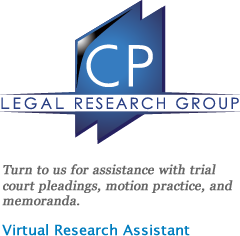New York, New York (August 25, 2014) - The New York Law Journal, the largest selling legal daily in the United States, published its “Court of Appeals and Appellate Practice” special report. This report is published once a year and it covers a wide array of appellate-related topics. Counsel Press is a proud sponsor of this publication, making it available to all appellate practitioners regardless of whether they subscribe to the New York Law Journal or not.
View the Digital Edition of this Special Report.
Inside This Issue:
Court's Decisions Include Resolution of Nonparty Disclosure Conflict
Patrick M. Connors, a professor at Albany Law School, discusses civil procedure decisions handed down by the New York Court of Appeals during its 2013-2014 term, including a case that tackles the issue of whether something more than mere relevance is required for disclosure from a nonparty.
Cases Address a Second Amendment Challenge and a Non-Citizen Felony Plea, Among Other Issues
Paul Shechtman, a partner at Zuckerman Spaeder, writes about noteworthy decisions that stood out among the 98 criminal cases the court decided during the 2013-2014 term, including a Second Amendment challenge to a gun conviction.
Among Significant Decisions, Court Vacates Prior Breach of Duty to Defend Ruling
Evan H. Krinick, managing partner of Rivkin Radler in Uniondale, writes: This past term, the court issued nine significant insurance law decisions, including one for which it heard reargument and vacated a unanimous—and highly controversial—ruling that it had issued near the end of its 2012-2013 term.
Medical Monitoring Cause of Action Rejected in One of Three Stand-Out Cases
Jeffrey S. Lichtman and Richard A. Menchini, partners at O'Hare Parnagian, write: Over the past year, the New York Court of Appeals has handed down three decisions that provide clear and broadly applicable interpretation of both statutory rules and common law principles in tort cases, including whether New York recognizes medical monitoring as an independent cause of action or as an element of damages.
Five Ways to Impress, Five Ways to Depress an Appellate Judge
Joseph P. Sullivan, of counsel to Holland & Knight and a former Presiding Justice of the Appellate Division, First Department, in New York, writes: Appellate advocacy is an art, not shared by every lawyer solely as a result of legal training or even practical legal experience. Effective appellate advocacy is a specialty, the key to which, as in every aspect of the law, is thorough preparation.
Preserving Issues for Appeal
Scott Chesin and Michael Rayfield of Mayer Brown in New York write: An effective appeal begins at trial. In virtually every appellate court in this country, the general rule is that an issue must first be presented to the trial court before it can be raised on appeal. New York is no exception.
Smile: This Is Oral Argument
Donna Aldea, a partner at Barket, Marion, Epstein & Kearon, writes: While perhaps counterintuitive, the way to win an argument is not to deliver a pre-prepared speech, harping on the strongest points of your case, which have already been fully briefed and have probably already persuaded the court, but to use every minute of your precious argument time to confront the difficult issues head on.
What's Your Problem? Are You Aggrieved?
Harry Steinberg, a member of Lester Schwab Katz & Dwyer, writes: It is always good advice to think long and hard about the possible consequences of perfecting an appeal. One of the consequences of not carefully considering whether the proposed appellant has been aggrieved—and an embarrassing consequence at that—is dismissal of the complaint on a purely procedural ground.
The Appellate Mandate: A Critical Step
Gregory Silbert and Kami Lizarraga of Weil, Gotshal & Manges write: Until the mandate issues, the appellate court's decision is non-final and you rely on it at your own risk. Understanding the mandate can be critical for determining when an appellate court has jurisdiction and whether an appellate decision supplies the law of the case.
Perfecting Civil Appeals in the New York State Appellate Division: Which of the Three Available Methods is Perfect for Your Case?
Vincent Wiscovitch and Marie Bonitatibus of Counsel Press write: Although the CPLR is pretty easy to understand regarding how to “take an appeal,” the rules on how to “perfect” an appeal are not quite so clear. This article explains the three available methods.
Counsel Press serves our attorney clients from within 12 physical locations nationwide, including 6 with state-of-the-art production facilities. Our services focus on the rule compliant service and filing of all appellate matters, and also include divisions specializing in filing within the Supreme Court of the United States, cutting-edge eBrief technology, on-demand legal research and writing for our attorney clients and real estate development and offering plans. Last year Counsel Press assisted over 7,000 customers, located within all 50 states, with over 8,500 filings in 81 jurisdictions nationwide and internationally.


![[currentrow]](images/SideBarPhoto/Ads - Side Bar.png)